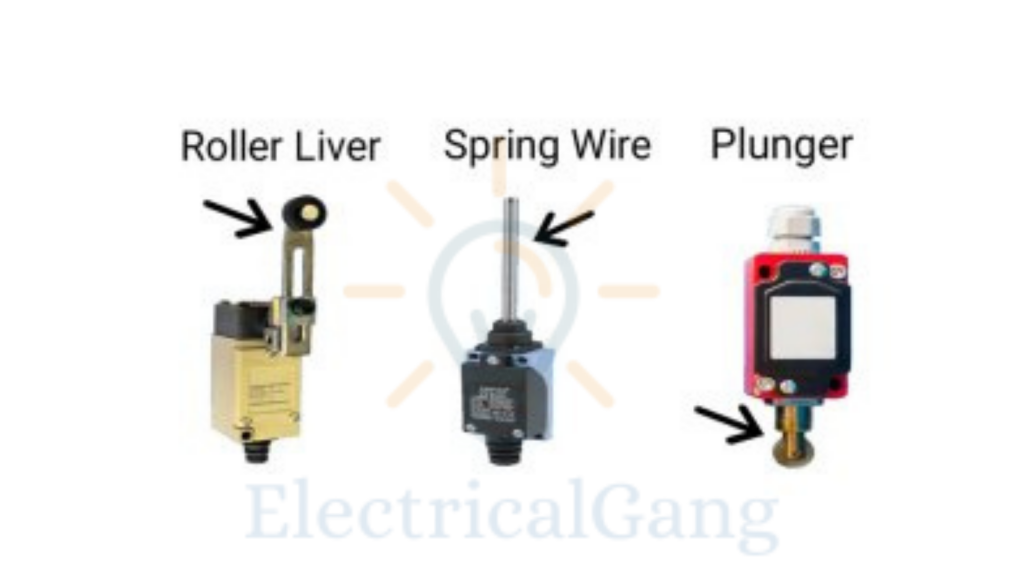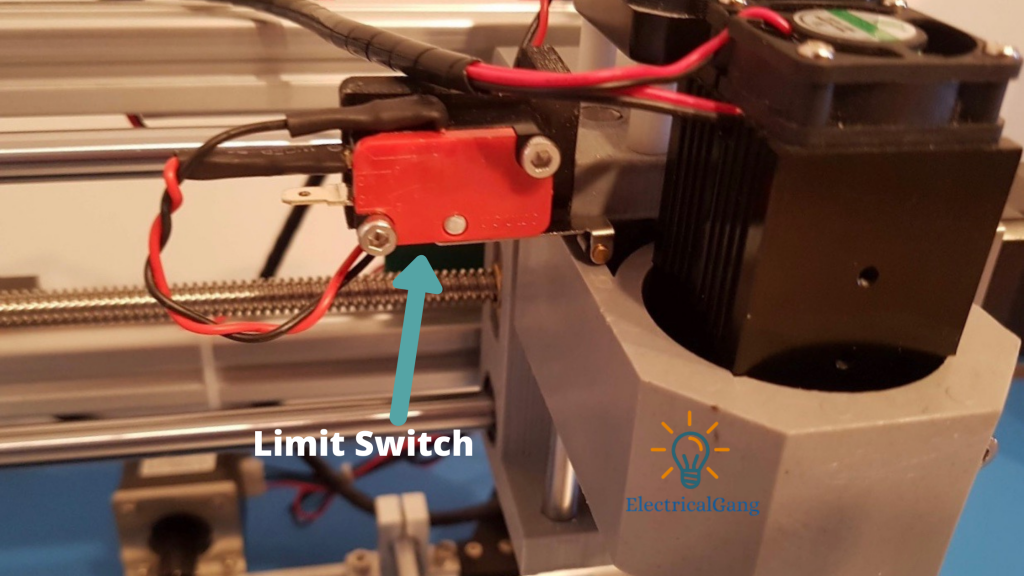
Hello friends, today we will talk about what a limit switch is, how a limit switch works, where it is used, and what are its advantages and disadvantages.
What is a Limit switch?
The limit switch is the same type of normal switch that is fitted in our house. With the help of the limit switch, we can control any device that runs on electricity. The main function of a limit switch is to observe and control the physical movement of any machine.
For example, suppose a motor is going from left to right and we have to unload something somewhere then we will stop the motor for it. The switch used to stop the motor at such time is known as a limit switch.
Suggested Read: What Is HRC Fuse? | The Definitive Guide
Where is the Limit switch used?
The limit switch is used extensively in the control system. The limit switch also has a different role in automating our machine. Limit switches are commonly overused in CNC machine robotics and motor control functions. Apart from this, the limit switch is also used for safety purposes
Parts of the limit switch:
The limit switch consists mainly of 3 parts which are as follows:
| Sr. No. | Parts of the limit switch |
| #1. | Liver/Actuator |
| #2. | Operating header |
| #3. | Contact |
#1. Liver/Actuator:
The lever of a limit switch is also called an actuator. This limit is located on the outside of the switch and is attached to the header. The lever always works up and down. When anything presses the lever of this limit switch, the contact inside the switch operates and the switch starts working.
There are 3 types of limit switches depending on the lever/actuator.

1. Roller Lever.
2. Spring Wire.
3. Plunger.
Suggested Read: What is 2 Way Switch | 2 Way Switch Wiring
#2. Operating Header:
The lever of the limit switch is mounted on top of this operating header, due to which this operating header operates whenever there is any movement in the lever.
Remember this point:
When there is movement in the lever of the limit switch, it operates the header. In the same way, the NO contact inside the switch also operates when the header operates.

When this switch is turned on or off we get to hear a small sound
With the help of this, while working in the field, we know quickly whether this switch is in working condition or not. If the switch is bad, we will not hear any sound.
#3. Contact:

Contacts are made inside the limit switch and with its help, we are able to do the wiring. Control wiring is done inside these contacts. There are mainly two types of contacts inside the limit switch. One is NO and the other is in NC.
Suggested Read: What is a Three Phase Inverter? | The Definitive Guide
Limit Switch Working Principle:

Working of the limit switch- The lever is fitted in the limit switch. And when the device comes in touch with it, this lever rotates. As it rotates, the mini switch inside the limit switch operates. The mini switch inside the limit switch has an NO and an NC contact.
Difference Between NC and NO Contacts:
NC contacts- This contact de-energized means connected to each other in the normal state. That is, if you check the NC contact with a multimeter, you will find it in close condition.
NC contacts remain closed in normal condition and open as soon as they are energized.
NO contacts- the same if we talk of NO (Normally open) then these contacts remain open in a de-energized state. That is, if you check the NO contact with a multimeter, you will find these two far apart. NO contacts remain open in normal conditions and close as soon as they are energized.
Advantages of installing limit switches:
The advantages of the limit switch are as follows:
- Limit switches are quite accurate
- Limit switches operate at very low power.
- The cost is much lower compared to sensors.
- The limit switch can also be used in open spaces.
Suggested Read: What Is SMPS? | Working Principle of SMPS
Disadvantages of the limit switch:
The disadvantages of the limit switch are as follows:
- If it works for a long time, it is very likely to break down.
- It is necessary to come in direct contact with the working of the limit switch.
- If a device is moving fast then it becomes difficult to detect that device at that time.
Where is the limit switch used?
- The presence or absence of any object can be detected.
- In speed detection.
- In automation.
- To know the position or travel limit.
Most Commonly Asked Question:

What is the application of the limit switch?
The application of Limit Switch is as follows:
- Injection molding machine.
- PLC interface.
- Machine tool equipment.
- Elevators, escalators, and moving stairs.
- Gaming machines, material handling.
- Packaging and textile equipment.
- Food and beverages, industrial doors.
What is the limit switch state its types and its function?
A limit switch is a type of sensor that works to detect the presence and absence of an object. It can be mechanically activated by interacting with other substances. As the object contacts the actuator of the switch, it eventually moves to the limit of the actuator where the position of the contact changes.
Why is the limit switch important?
This switch is able to detect the presence or movement of an object. It can also determine the end and beginning of an object’s journey.
What is a Limit switch?
The limit switch is the same type of normal switch that is fitted in our house. With the help of the limit switch, we can control any device that runs on electricity. The main function of a limit switch is to observe and control the physical movement of any machine.
Like this post? Could you share it with your friends?
Suggested Read –
thankyou for sharing valuable content regarding to electrical engineering.